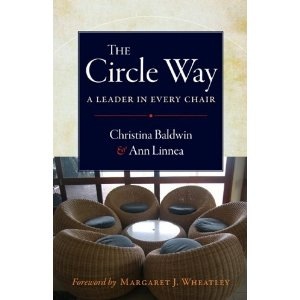Certain members of my friends and family circle make fun of me tease me because I often rearrange the chairs at social, public and business gatherings.
My beloved sister got a bit irked by my penchant for chair moving last month when, 20 minutes before her party started, she came into her living room to see me adjusting her furniture arrangement. “That looks terrible! It’s off balance!” she protested.
But I invoked my older sister status my PhD and told her that I knew what I was doing. I would have explained myself, but it can be difficult to articulate just why a big square of 14 seats is not as good as 3 rounded clusters of 4 or 5 seats.

How we sit is how we interact.
Most people walk into an empty room and look for symmetry or pattern in the seating arrangement, but not me.
I look for the dynamics those empty seats might create. If I don’t like what the chairs predict, I move them. I don’t want the room to look good; I want the room to work for the people who will fill it.
Many people don’t realize how much the physical structure of a room influences interaction. They don’t understand how to arrange chairs so that conversation is easier. And, they rarely think about how people might be clustered in small groups so that they can hear each other and make real, authentic connections.
I’ve realized that I often do my rearranging covertly, without asking for anyone’s permission, simply because explaining my reasons takes too long. But now I’ve discovered a lovely list of five reasons why circles (and curves, and clusters) can be so effective at fostering honest and authentic communication.

5 ways that moving chairs helps us lead
Christina Baldwin and Ann Linnea, authors of The Circle Way: A leader in every chair, have summarized 5 of their important insights from “The Circle Way” their framework for facilitating shared leadership and shared engagement, at the BK Communiqué Author Lists Blog.
I won’t snitch BK’s content by reposting the full list hear. But let me tempt you to go to their post by sharing my favorite reason:
3. Meeting in circle is a sort of a contained treasure hunt. The wisdom we need is in the room, and the only way to truly gather it, think about it, and make decisions based on it, is to hear every voice. Who has the question? Who has the answer? Who knows the next piece? What creative idea will be heard from an unexpected source?
Baldwin and Linnea also have a website, PeerSpirit, where they offer us a downloadable set of guidelines for using circles to facilitate authentic communication.
 Like Dotmocracy, Linnea and Baldwin’s Circle process is a straightforward tool that can transform colleagues’ interactions in ways that elicit new ideas, increase enthusiasm, build relationships, and nurture commitment to an important goal.
Like Dotmocracy, Linnea and Baldwin’s Circle process is a straightforward tool that can transform colleagues’ interactions in ways that elicit new ideas, increase enthusiasm, build relationships, and nurture commitment to an important goal.
Be a leader. Move some chairs.
Drag one of them over here, and smush those two together, and viola, people can hear each other. People can make eye contact. People can lean back and laugh without falling away from the energy. People can challenge each other and nudge each other forward.
Pull up a chair, and we can really work together.
See also:
Tools for Authentic Organizations: Dotmocracy
 I am an organizational consultant, change advocate, and organizational identity/reputation scholar with a PhD in leadership & organizations. I research, write about, and consult with organizations on the relationships between organizational identity, actions, and purpose. I teach Technology Management, part-time, at Stevens Institute of Technology.
My current research focuses on how social technologies in the workplace can drive organizational change, generate meaning, and catalyze purpose. See the
I am an organizational consultant, change advocate, and organizational identity/reputation scholar with a PhD in leadership & organizations. I research, write about, and consult with organizations on the relationships between organizational identity, actions, and purpose. I teach Technology Management, part-time, at Stevens Institute of Technology.
My current research focuses on how social technologies in the workplace can drive organizational change, generate meaning, and catalyze purpose. See the 
{ 8 comments }
CV, I do this too.
It’s amazing what happens when a “business” meeting happens in a room without tables, where no one can pretend to be taking notes, or check their Blackberry under the table.
The lack of tables can be really disconcerting, and make people anxious. It draws their attention to how little eye contact they are used to during a meeting. I think eye contact is a key part of authentic face-to-face conversation.
Oh, and my students from the Marines tell me that the circle was an important lesson for them when meeting with Afghan tribal elders.
HI Sandy —
I know I’m not the only covert chair re-arranger, so I appreciate knowing that I have good company…You’d really like the whole argument and explanation for The Circle Way (the book), since it goes into greater detail about the reasons for and cross-cultural uses of the circle format. Also, Baldwin & Linnea add process guidelines and a framework that really expanded how I’d been thinking of the interaction between circles and group dynamics == esp their idea that in a circle, leadership is on the lip of every seat. cv
I too am a major chair mover, usually to get circles in classroom settings. Having worked with the Deaf community for many years, I have a strong sense of “Deaf etiquette”–if people can’t see you, they can’t understand what you are “saying.” For discussion between individuals (usually students in my case), they have to talk to each other’s faces, not to their backs.
Any gathering can benefit from circular arrangements. Our mastermind group, made up of five self-employed folks, meets in circle format once a month and it helps us to be open and honest with one another. My last birthday party was in a large hall, so I placed a large potted plant in the centre of the room as a focal point of life and growth, then arranged chairs in circular groups of four or five in various places around the room. The conversations were delicious!
.-= James Wells´s last blog ..Do the Prep Work! =-.
Hi,
I love creativity and your post gives me some new ideas:) I use brainstorming quite often and how we sit or walk around matters a lot. Now, after reading your post, I’ve got some “sitting methods of improvement” in my mind:)
.-= Justyna Bizdra´s last blog ..Is Wordpress Security of any importance to you? =-.
Terrific work! This is the type of information that should be shared around the web. Shame on the search engines for not positioning this post higher!
Your site info is really good..
I really love your post. Hope this blogpost will help other people. Sorry for the short review.
Comments on this entry are closed.